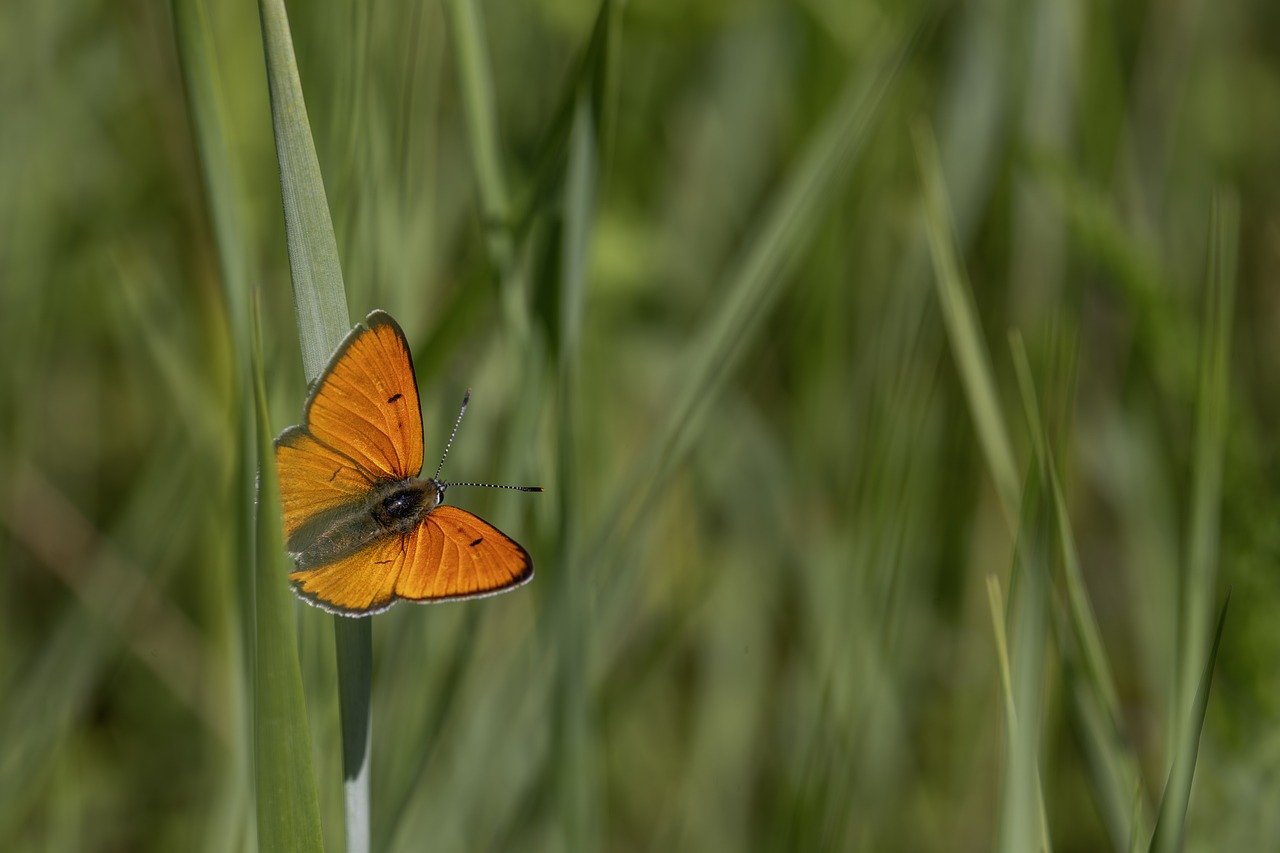The Large Copper (Lycaena dispar) is a striking butterfly known for its vibrant colors and significant conservation importance. Here’s a detailed overview:
Description
- Wingspan:
- The Large Copper butterfly has a wingspan ranging from 30 to 38 millimeters (1.2 to 1.5 inches).
- Appearance:
- Male: The male’s forewings are bright copper-orange with a black margin, while the hindwings are dark brown with a few orange spots. The undersides of both wings are a pale brown with intricate patterns that provide excellent camouflage.
- Female: The female’s coloration is generally more subdued, with forewings that are a more muted orange and hindwings that are lighter brown. The undersides are similar to those of the male but often paler.
- Both sexes have black spots on the upper and lower sides of their wings. The vivid orange coloration of the male makes it particularly striking and easy to identify.
Habitat and Range
- Range:
- The Large Copper is found across parts of Europe and extends into Asia, including areas such as Russia and Kazakhstan. Historically, it was more widespread, but its range has diminished due to habitat loss.
- Habitat:
- This butterfly prefers open, sunny areas such as meadows, heathlands, and grassy clearings in woodlands. It is often associated with areas where its larval host plants, particularly those in the Lysimachia genus, are found.
Behavior and Diet
- Diet:
- Adults: The Large Copper feeds on nectar from various flowering plants, including thistles, knapweeds, and clovers. It is often seen basking on flowers or basking in the sun.
- Larvae: The caterpillars feed primarily on plants from the genus Lysimachia, such as Lysimachia nemorum (common yellow loosestrife) and Lysimachia vulgaris (yellow loosestrife).
- Behavior:
- The Large Copper is known for its strong, fast flight and can be seen flitting rapidly from flower to flower. It tends to be more active during sunny periods.
- It has a tendency to bask in the sun, which helps it to regulate its body temperature and aids in its flight and foraging activities.
Reproduction
- Breeding Season:
- The Large Copper typically has one or two broods per year, depending on its location. The first brood emerges in late spring to early summer, and the second, if present, appears in late summer.
- Eggs and Larvae:
- Females lay their eggs on the host plants. The larvae are small and green with subtle markings, and they feed on the host plant leaves. They often hide under leaves for protection from predators.
- Pupation:
- After feeding, the caterpillars form a chrysalis, which is typically camouflaged to blend in with the surrounding environment. The adult butterfly emerges from the chrysalis after a few weeks.
Conservation Status
- Population:
- The Large Copper is considered a species of conservation concern due to its declining populations and loss of habitat. It has been designated as a priority species for conservation in several regions.
- Threats:
- The primary threats to the Large Copper include habitat loss due to agricultural expansion, urbanization, and changes in land use. The loss of suitable host plants also impacts its survival.
- Conservation Efforts:
- Conservation efforts for the Large Copper include habitat restoration and management, such as maintaining and creating habitats that support its host plants. Conservation organizations often work to protect existing habitats and establish new areas suitable for the butterfly.
Summary
The Large Copper (Lycaena dispar) is a visually striking butterfly noted for its bright copper-colored wings and specific habitat requirements. While its populations are under threat due to habitat loss and other factors, conservation efforts are ongoing to preserve its natural habitats and ensure its continued presence. This butterfly’s vibrant colors and ecological importance make it a notable species within its range.
Visited 895 times, 1 visit(s) today
Views: 1621
Subscribe to the newsletter:
